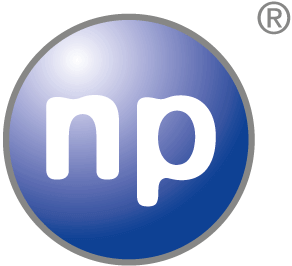Q1. What was your company’s unique approach in integrating technology to achieve UN’s Sustainable Development Goal (SDG)?
Nanopool has succeeded in developing a technology that solves the central problems of our time without harming the environment. Rather, the use of our products additionally leads to more sustainability.
The basis of our solution is a patented recipe for ultra-thin barrier layers which are able to prevent harmful substances such as pathogens from adhering to surfaces. This physical protection is capable of bonding firmly to almost any material one could think of, making the application fields extremely versatile.
To explain this in more detail, let’s jump back to 2007, when Steve Jobs presented the world the very first iPhone: Until then, mobile phones were equipped with physical keyboards and several buttons which could perform differently depending on the respective application. The possibilities were correspondingly limited: each application had to be based on the existing hardware, which in return varied from device to device. Apps that could be used on different devices without any problems were hardly imaginable.
However, with the virtualization of the buttons and keyboard, applications could be developed that met all kinds of needs on any hardware, completely independent of such limitations. While mobile phones previously had a fixed set of programs and options, it was now possible to add new apps in real time according to current needs. Today, every smartphone in use is equipped with exactly the functions that are required.
This is exactly how the principle of the multifunctional layers from Nanopool works: The basic matrix of the SiO2-based protection barrier gives surfaces strongly repellent properties against harmful substances. The solution is fully bio-compatible and environmentally friendly. It is like the operating system of a smartphone: basic functions meet the most common needs. But in addition, further functions can flexibly be embedded in the recipe, so that the layer can individually be expanded and adapted to new needs of different materials, environments and contextual requirements.
In concrete terms, this means that the properties of the barrier layer are adapted to various substrates, environmental requirements and needed functions without changing anything in the basic recipe. For this reason, the range of possible applications of the NP® technology is almost limitless; from inorganic materials such as textiles, metal, plastic, glass, etc. to organic surfaces such as plants or the human skin, the multifunctional NP® layers can protect against the effects of UV radiation, moisture, germs, weathering and much more.
Q2. What are some examples of SDG-focused projects that your company is currently working on?
An application example for which the NP® technology has recently been rewarded the EU Tech Chamber SDG-Award for Goal 15 “Life on Land” is our sustainable protection solution for the agricultural sector: With the fully bio-compatible barrier layer we are capable of protecting seeds, plants as well as crops against biotic and abiotic stress in a very natural way. This treatment significantly reduces the amount of pesticides, fungicides or herbicides that are released into the soil and thus into the entire ecosystem during conventional arable farming, while at the same time increasing the crop yield.
With this approach we support several SDGs (Sustainable Development Goals) at the same time: Reducing the use of chemicals improves the condition of the arable land and preserves biodiversity (Goal 15, Life on Land). This also improves the water quality in the long term (Goal 6, Clean Water). The health of nature and animals automatically has an effect on human health (Goal 03, Good Health) – after all, some of the most toxic pesticides have long been detected in human tissue. And with the simultaneous increase of crop yields, goals 01 (No Poverty) and 02 (Zero Hunger) are also driven forward.
Q3. What are the most difficult challenges your company and other companies face generally in the implementation/adoption of new sustainable technology?
The fundamental difficulty that new ideas have to face on the market is the fact that innovations often threaten to displace established products and methods. In many sectors, visionary companies are in opposition to a lobby of long-established market leaders who, despite all sustainability concerns, have to defend their position out of financial interests. Top dogs who have usually established a lot of power in politics and business.
Q4. Tell me about a time your sustainable tech helped another company realize their SDG goals.
Another area of application for the multifunctional NP® barrier layers is the coating of packaging made of paper, cardboard and other sustainable natural fibres in order to replace conventional PE coatings with a completely plastic-free and biodegradable alternative. In this way, we enable packaging manufacturers to produce the truly green products that the market demands in order to reduce the amount of plastic waste that pollutes the world’s oceans (Goal 14: Life below water).
Furthermore, the packaging coated with NP® even has demonstrably better edge protection against moisture and germs than conventional products coated with less sustainable materials. Again, a clear win-win effect.
Q5. What is the biggest challenge your company has handled while enabling your sustainable tech accessible to different communities?
While the world is always asking for innovation, companies, institutions and end-users usually find it difficult to actually openly embrace innovative new products. They often cannot manage to see things from an unfamiliar point of view even if they want to embark on new solutions. This means, innovation is measured against the parameters known from traditional applications and technologies, although they may not fit the new situation.
Rethinking new solutions requires the flexibility to let go of old ways. A process which many find difficult and that blocks the implementation of new technologies.
Another point is the fact that it takes much more to gain trust for new ways than for well-known ones, even if the benefits are clearly demonstrable, as is the case with the NP® technology due to numerous scientific studies and safety proofs.
Q6. Cost-effective sustainable tech can be lifesaving and planet-saving approach. What actions your company takes to make your sustainable tech economical and a fit for the large-scale adoption?
The aim of Nanopool is to enable production that can be implemented quickly in all regions of the world without additional costs and CO2 emissions from transport. This is made possible by a decentralized approach with the transfer of knowledge and licenses to local partners. The uncomplicated and safe application without additional equipment also makes the solution affordable for regions with little financial resources.
Q7. What do you believe will be a global, long-term, impact of your sustainable tech integration?
In the case of our application of an ultra-thin barrier layer for paper, cardboard and other natural fibre-based packaging materials, extensive worldwide use would make it possible to dispense with PE coating 100% on the global market. Plastic packaging could be replaced by fully biodegradable alternatives thanks to the NP® technology without any disadvantages in terms of stability and hygiene – the reduction in plastic waste would be enormous!
Conventional plastic packaging has the advantage that it is water- and oil-repellent and thus keeps moisture away from sensitive contents as well as protecting liquid contents from leaking. When trying to switch to more environmentally friendly materials such as cardboard, , those materials have to be brought to a comparable level of performance through a PE layer. The ultra-thin and completely biodegradable NP® barrier layer, on the other hand, manages this step without the use of plastics.
Q8. What’s your vision for the sustainable tech industry and your company’s role in it?
We believe it is imperative that companies solve problems in a way that doesn’t create new problems. This domino effect, which has been practiced for far too long, must be interrupted, and this requires a look at the big picture.
The 17 SDGs clearly show how interrelated the problems in this world are: Poverty (01) leads to malnutrition (02) and a lack of education (04), among other things. Malnutrition leads to bad health (03), as does a lack of clean drinking water (06). The links can be easily continued in this form.
Nanopool’s approach is to meet challenges in such a way that they also offer solutions to other topics. Our application for plants and crops for example makes it possible to practice agriculture that maintains soil health and biodiversity on the one hand, and at the same time strengthens plant growth and thus increases harvests, which in result fights hunger and poverty.
The world works in cycles, everything interacts with each other and we have to take this into account when applying technology.
Sascha Schwindt
Managing Director,
Nanopool GmbH.


